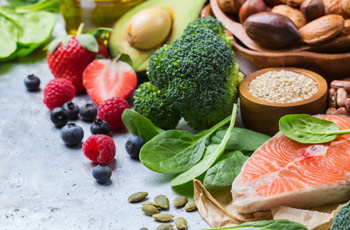
Americans tend to have an all-or-nothing mindset when it comes to eating, and for generations, we’ve been told to forgo fat because it raises cholesterol and increases our risk of heart disease.
After decades of research, however, experts are questioning and reevaluating the link between fat and heart disease. The skinny is, researchers now believe the relationship between cholesterol and heart disease is much more complicated than it was thought to be in the 1960s, when concerns over fat intake reached a fever pitch.
Experts now believe there are good fats and bad fats. There’s evidence that when compared to carbohydrates (too often swapped in for saturated fats), good fats can raise HDL and lower triglycerides, decrease inflammation and provide essential nutrients for our bodies. Good fats lower the risk of heart disease.
What then, should be the takeaway? Overall, the best advice regarding what to eat is this: don’t embrace an all-or-nothing approach to nutrition. You shouldn’t, therefore, replace all fat with carbohydrates or fat-free substitutes (which are frequently loaded with added sugar, salt and calories).
Skip the fad diets or diets built on single nutrients. A healthy diet should include a broad range of minimally processed, whole foods like nuts, whole grains, legumes, fish, fruits, vegetables. Vegetable and olive oils are a healthy source of fat. Small amounts of dairy products, such as low fat milk, yogurt and cheese are OK. Limit red meat, especially processed meat.
Regarding fats specifically, it’s important to remember your body needs some fat from the food you eat, as it delivers energy, helps absorb vitamins and minerals, builds cell membranes, and provides several other key benefits.
That said, all fats are not created equal:
- The worst kind of fat is known as as trans fat (or trans fatty acids). Trans fats are found in processed foods like cakes and cookies, microwave popcorn, doughnuts, and frozen pizzas. Avoid consuming trans fats.
- Saturated fats are also common in the American diet. Sources include meat, cheese, whole milk, commercially prepared baked goods and coconut oil. Most nutritionists will recommend limiting saturated fat to under 10 percent of your daily calories.
- Good fats (monounsaturated and polyunsaturated fats) are fats that come from mainly vegetables, nuts, seeds and fish.
- Monounsaturated fat sources include olive oil, peanut oil, avocados and most nuts.
- Polyunsaturated fats are essential fats, meaning they’re required to achieve normal body functioning, but your body can’t make them.
- There are two types of polyunsaturated fats: omega-3 and omega-6 fatty acids. Good sources of omega-3 fatty acids include salmon, mackerel and sardines, as well as flaxseeds, walnuts and canola oil. Foods rich in omega-6 fatty acids include safflower, soybean, sunflower, walnut and corn oils.
As much as possible, you should aim to replace trans fats and saturated fats with monounsaturated and polyunsaturated fats.
Make it a heart-healthy year,
Dr. William Frauenheim